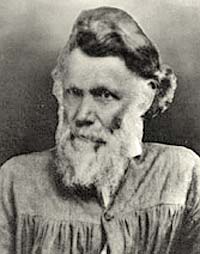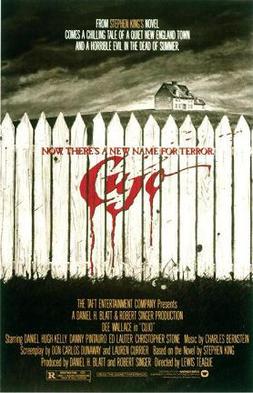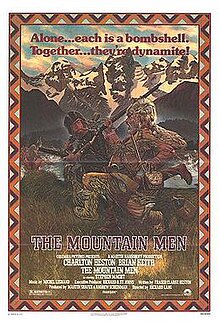
Christopher Houston Carson was an American frontiersman. He was a fur trapper, wilderness guide, Indian agent and U.S. Army officer. He became a frontier legend in his own lifetime through biographies and news articles; exaggerated versions of his exploits were the subject of dime novels. His understated nature belied confirmed reports of his fearlessness, combat skills, tenacity, as well as profound effect on the westward expansion of the United States. Although he was famous for much of his life, historians in later years have written that Kit Carson did not like, want, or even fully understand the fame that he experienced during his life.

The Blackfoot Confederacy, Niitsitapi, or Siksikaitsitapi, is a historic collective name for linguistically related groups that make up the Blackfoot or Blackfeet people: the Siksika ("Blackfoot"), the Kainai or Blood, and two sections of the Peigan or Piikani – the Northern Piikani (Aapátohsipikáni) and the Southern Piikani. Broader definitions include groups such as the Tsúùtínà (Sarcee) and A'aninin who spoke quite different languages but allied with or joined the Blackfoot Confederacy.

Friday the 13th is a 1980 American independent slasher film produced and directed by Sean S. Cunningham, written by Victor Miller, and starring Betsy Palmer, Adrienne King, Harry Crosby, Laurie Bartram, Mark Nelson, Jeannine Taylor, Robbi Morgan, and Kevin Bacon. Its plot follows a group of teenage camp counselors who are murdered one by one by an unknown killer while they are attempting to re-open an abandoned summer camp with a tragic past.

A mountain man is an explorer who lives in the wilderness and makes his living from hunting and trapping. Mountain men were most common in the North American Rocky Mountains from about 1810 through to the 1880s. They were instrumental in opening up the various emigrant trails allowing Americans in the east to settle the new territories of the far west by organized wagon trains traveling over roads explored and in many cases, physically improved by the mountain men and the big fur companies, originally to serve the mule train-based inland fur trade.
David Edward “Davey” Jackson was an American pioneer, trapper, fur trader, and explorer.
The enterprise that eventually came to be known as the Rocky Mountain Fur Company was established in St. Louis, Missouri, in 1822 by William Henry Ashley and Andrew Henry. Among the original employees, known as "Ashley's Hundred," were Jedediah Smith, who went on to take a leading role in the company's operations, and Jim Bridger, who was among those who bought out Smith and his partners in 1830. It was Bridger and his partners who gave the enterprise the name "Rocky Mountain Fur Company."
Major Andrew Henry was an American miner, army officer, frontiersman, trapper and entrepreneur. Alongside William H. Ashley, Henry was the co-owner of the successful Rocky Mountain Fur Company, otherwise known as "Ashley's Hundred", for the famous mountain men working for their firm from 1822 to 1832. Henry appears in the narrative poem the Song of Hugh Glass, which is part of the Neihardt's Cycle of the West. He is portrayed by John Huston in the 1971 film Man in the Wilderness and by Domhnall Gleeson in the 2015 film The Revenant, both of which depict Glass's bear attack and journey.

Death Hunt is a 1981 Western action film directed by Peter Hunt. The film stars Charles Bronson, Lee Marvin, Angie Dickinson, Carl Weathers, Maury Chaykin, Ed Lauter and Andrew Stevens. Death Hunt was a fictionalized account of the Royal Canadian Mounted Police (RCMP) pursuit of a man named Albert Johnson. Earlier films exploring the same topic were The Mad Trapper (1972), a British made-for-television production and Challenge to Be Free (1975).

Joseph Goff Gale was an American pioneer, trapper, entrepreneur, and politician who contributed to the early settlement of the Oregon Country. There he assisted in the construction of the first sailing vessel built in what would become the state of Oregon, sailed the ship to California to trade for cattle, and later served as one of three co-executives ("governors") in the Provisional Government of Oregon. Originally a sailor, he also spent time in the fur trade, as a farmer, and a gold miner in the California Gold Rush.

Across the Wide Missouri is a 1951 American Technicolor Western film based on historian Bernard DeVoto's eponymous 1947 book. The film dramatizes an account of several fur traders and their interaction with the Native Americans.

Hercules is a 1983 Italian-American science fantasy adventure film written and directed by Luigi Cozzi and starring bodybuilding champion Lou Ferrigno. The film is based on Greek mythology and follows the exploits of Hercules. Supporting cast includes Brad Harris, Sybil Danning and William Berger. Filmed in Italy, Hercules was released theatrically in August 1983 and has grossed $11 million at the American box office. It received mostly negative reviews from film critics, although over the years it has become a cult movie. Ferrigno reprised his role in the 1985 sequel, The Adventures of Hercules.

Playing for Keeps is a 1986 American comedy film written and directed by brothers Bob and Harvey Weinstein. It stars Daniel Jordano, Matthew Penn and Leon W. Grant as a trio of inner-city teenagers attempting to strike it rich by turning a hotel into a rock 'n' roll resort. A then little-known Marisa Tomei has a supporting role.

Cujo is a 1983 American horror film based on Stephen King's 1981 novel of the same name and directed by Lewis Teague. It was written by Don Carlos Dunaway and Barbara Turner, and starring Dee Wallace, Daniel Hugh Kelly and Danny Pintauro.

Pierre's Hole is a shallow valley in the western United States in eastern Idaho, just west of the Teton Range in Wyoming. At an elevation over 6,000 feet (1,830 m) above sea level, it collects the headwaters of the Teton River, and was a strategic center of the fur trade of the northern Rocky Mountains. The nearby Jackson's Hole area in Wyoming is on the opposite side of the Tetons.
The Missouri Fur Company was one of the earliest fur trading companies in St. Louis, Missouri. Dissolved and reorganized several times, it operated under various names from 1809 until its final dissolution in 1830. It was created by a group of fur traders and merchants from St. Louis and Kaskaskia, Illinois, including Manuel Lisa and members of the Chouteau family. Its expeditions explored the upper Missouri River and traded with a variety of Native American tribes, and it acted as the prototype for fur trading companies along the Missouri River until the 1820s.

The fur trade in Montana was a major period in the area's economic history from about 1800 to the 1850s. It also represents the initial meeting of cultures between indigenous peoples and those of European ancestry. British and Canadian traders approached the area from the north and northeast focusing on trading with the indigenous people, who often did the trapping of beavers and other animals themselves. American traders moved gradually up the Missouri River seeking to beat British and Canadian traders to the profitable Upper Missouri River region.

Bailout at 43,000 is a 1957 American drama film directed by Francis D. Lyon and written by Paul Monash. The film stars John Payne, Karen Steele, Paul Kelly, Richard Eyer, Constance Ford and Eddie Firestone. The film was released on May 1, 1957, by United Artists.
Hiram Scott was an American mountain man, trapper, and pelt trader who trapped and took part in expeditions throughout the western United States during the 1820s. Born in Missouri, Scott joined the Rocky Mountain Fur Company in 1822 and took part in the first fur trade expedition at the Great Salt Lake in Utah. He died at age 23 near a cliff along the North Platte River in Nebraska which was named in his honor. The circumstances leading to his demise have given rise to many diverse accounts and theories.
Henry Fraeb, also called Frapp, was a mountain man, fur trader, and trade post operator of the American West, operating in the present-day states of Colorado, Wyoming, and Montana.













